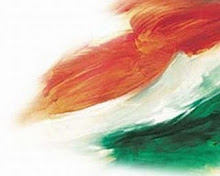Yellow Journalism is a mutated division of Journalism that goes against the key principles of reporting as an unbiased and objective tool for conveying the news. Yellow Journalism is “journalism that exploits, distorts, or exaggerates the news to create sensations and attract readers.” Yellow journalism ‘believes’ in a gross misreporting and underreporting of facts, in playing up news that is likely to create a frenzy, stringing an emotional chord with the masses, feeding the appetite for sensationalism, scandal mongering and exciting public opinion
The Battle on Park Row, New York, between William Randolph Hearst’s Journal and Joseph Pulitzers World in the late nineteenth century, marked the advent of Yellow Journalism. The role of Pulitzer as primary nurturer comes as surprise to all those who have connected the name only with America’s most celebrated Journalistic Award.
In the midst of the War of Words, Hearst lured the Richard Outcault popular artist of the Sunday Worlds comic strip, ‘The Yellow Kid’, (the then in Vogue cartoon that was prominent and conspicuous and stood out because of use of yellow ink that shone through all the black and white) to the Journal. Pulitzer not to take defeat lying down and had the World continues a rendition of the ‘Yellow Kid’, even though the artist no longer worked for the paper. And thus the phrase came in to being, with a focal point not the colour but the content that was increasingly tainted in nature.
India has increasingly fallen prey to this contagion and stands today under its heavy and gaudy canvas. Written and televised media, in an attempt to boost circulation and enhance viewership, have resorted to these devil-may-care tactics and it appears that there is no looking back. Distinguished and renowned media people, writers, correspondents and editors have routed to garish and often lewd news items with each channel in a rush to ‘break’ news or catch an exclusive which flash far too often to be taken seriously. Controversy is not allowed to take its usual course and die a natural death; it is instead dredged up and twisted to keep animate and breathing.
The average Indian will identify the symptoms of this jaundiced journalism with ease. On one level the foul play is visual. Large fonts, dramatic colours, irrelevant and theatrical photography are used in an attempt to embellish the most trivial news. At the same time the language used for the bold headlines or newsflashes is inflaming and exaggerated, forcing the reader or viewer to halt abruptly and take notice. The media often plays along with the rumour mill not bothering to verify fact, faking quotes and printing bogus interviews. Once reputed newspapers and media channels are turning into trashy tabloids
Instances of the above in India’s recent history are far too many. On the July 26, 2005, the media had a field day as it reported the administrative failure of the Brihanmumbai Muncipal Corporation in its role in providing relief to those who had suffered because of the unnaturally heavy rain in Mumbai. Images of the average Mumbaikars struggle with the flood water flashed again and again on the TV screen for days, much after the water had long receded in most places. The Mumbai attacks once again saw the media doing nothing to pacify the heightened anxiety of the country, but instead thriving on the panic it fuelled as Operation Cyclone was shot at from different angles with an obnoxious disregard for the safety of the people trapped. Distinguished journalists spotted at the scenes of crime have been heard time and time again asking questions structured to enrage and outrage the people
Newspapers, not to be left behind, have played just as strong a role. What was the need to blow the Shahrukh – Salman – Katrina fiasco, or the Mallika and Minissha Lamba or for that matter, the Sourav Ganguly – Greg Chappell controversy to humongous proportion, when matters of far more relevance to the average Indian were grappling for attention?
Let me illustrate with some of the headlines carried by newspapers about Chappell fiasco: I wasn’t comfortable with Chappell: Sehwag (Press Trust of India Players were scared during Chappell’s tenure: Bhajji (Zeecric Beaureau).The headlines are so often relevant only to page 3, if even that. I mean, we all want to know that Ranbir and Deepika broke up, but wouldn’t we be just as well off not knowing about Saif’s tattoo or for that matter, why was Amitabh Bachchan’s views of Slumdog Millionaire making the headlines? Granted that he is the God of Indian cinema, but the man is entitled to express his opinion without being flogged for it.
The media in India, in a number of ways, exists as a degraded inferior version of itself, compromised in its ethics, stirring panic and grappling for attention in ways that should have been outgrown long ago. India as a newly born country needs pure unbiased news of relevance. As all infants, Young India can’t always be expected to tell the difference between what it needs to know and what it wants to know. One would expect the experienced media moguls to be in a better place to decide upon what news deserves notice and what can be thwarted. But perhaps this discretion is blurrier than anticipated. India needs facts, not biased opinions. Our media needs not to stand big and looming, but instead, to mature and grow.



